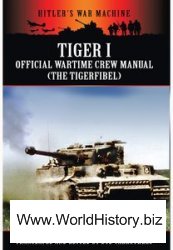Italian troops, armed with Manniicher rifles, pause at a frontier post
In occupied Russia.

On November 22, 1963, in Dallas, Texas, President John F. Kennedy was killed by three rifle shots. Apart from the sensation caused by the news, one particular aspect of the assassination bemused the weapons experts. According to the Warren Report, the assassin, Lee Harvey Oswald, fired the shots from a surplus Italian Army rifle, the Manniicher M91/38. This weapon will now go down in history as the one with which Kennedy was shot.
The M91/38 was never very highly thought of-indeed, according to an American catalogue published in 1959, one such rifle was sold in the United States for only $20. This low price was shared only by the Japanese Arisaka Ml 905 rifle and amounted to only $2 more than the cost of the Russian Ml 891 Moissin-Nagant.
The M91/38 rifle and carbine were undoubtedly good weapons, being yet more robust and handy than the M91 rifle and carbine, while maintaining the simple and rugged qualities of their predecessor.
After World War I many nations endeavoured to put their recent experience to good use and produce improved individual armaments. But, in Italy, despite the regime's warlike propaganda, hardly anything was done. From 1918 to 1938, the only new development was the M91/24, which was nothing more than an adaptation of the M91 with the additional characteristics of the TS carbine of the war period.
Then, in 1938, the new model appeared, a fruit of the labours of the arms designer Roberto Boragine. Mechanically similar to the M91, the calibre of the M91/38 was increased to 7.35mm; its length was reduced to 40.2 inches (from 50.8 inches); its rear sight was fixed at 300
Metres; and its weight was 7.5 pounds instead of 8.6. At the same time, a TS carbine (for Special Troops) and a cavalry carbine were put into production. To increase the calibre, the rifling, whose twist increased towards the muzzle in the 6.5-mm weapon, was left constant in the
7.35- mm model. One substantial change was in the bayonet, which was shortened and fixed so that it could be folded back on the handle and permanently attached to the barrel.
However, the decision to adopt a new rifle came too late. At the outbreak of war it was clear that Italy would not be able to produce enough ammunition in
7.35- mm calibre, and the M91/38 rifles were made in 6.5mm calibre to make them uniform with the M91. Later on in the war, however, the Ml941, virtually a shortened version of the M91, was adopted for general use.




 World History
World History









